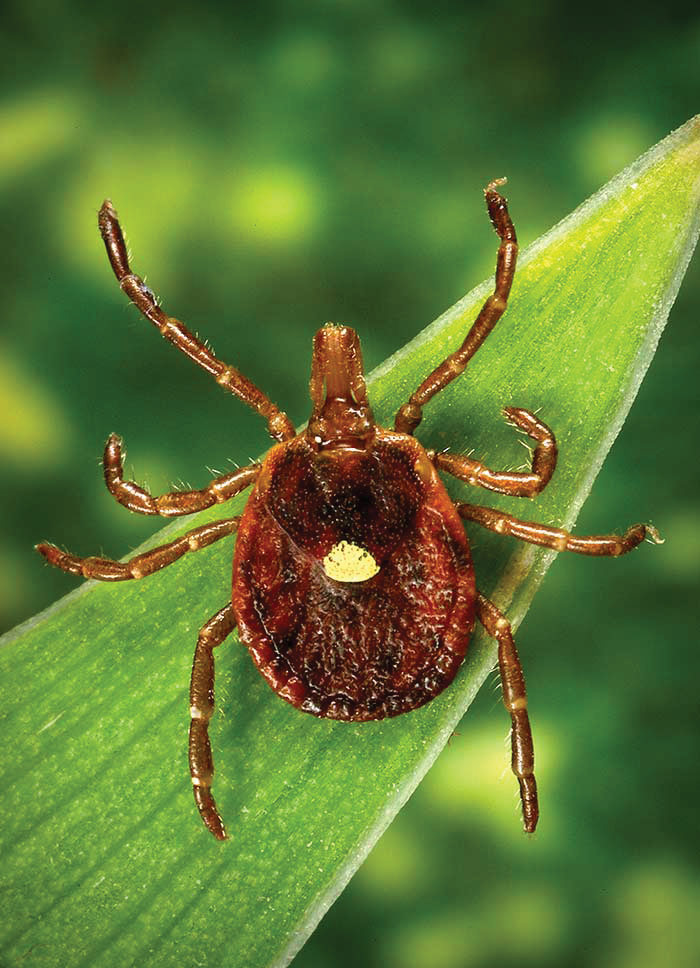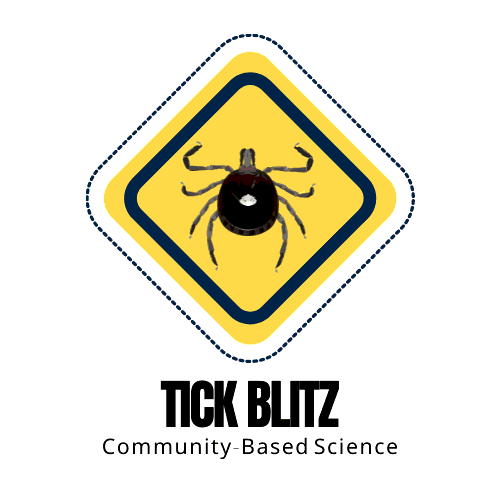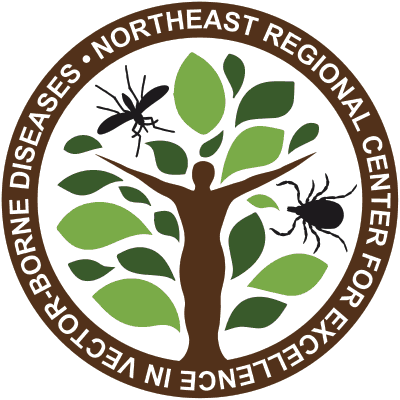Community-Engaged Science Helps Shed Light on Tick Distribution in New York State
 |
|
Adult female lone star tick. (Photo: CDC) |
By Emily Mader, Laura Harrington, and Aine Lehane
Northeast Regional Center for Excellence in Vector-Borne Diseases
Ticks and tickborne diseases are a constant threat to the health and well-being of people, animals, and communities across the Northeast.
The primary culprit behind tickborne illness in our region is the blacklegged tick (or deer tick), Ixodes scapularis. This tick is able to transmit several bacteria that can cause well-known illnesses like Lyme disease, anaplasmosis, and babesiosis.
Emerging Tick Threats
In recent years, additional ticks of public health concern have appeared in our region. Two ticks in particular are having an increased public health impact on communities in the Northeast: the lone star tick (Amblyomma americanum) and the Asian longhorned tick (Haemaphysalis longicornis).
Lone Star Tick
The lone star tick is native to the United States but has been uncommon in the Northeast. However, populations of this tick are now found in coastal regions of the mid-Atlantic and broader Northeast regions, including New Jersey, New York, and Connecticut.
The lone star tick is able to transmit several bacteria and viruses that can make people sick, and its bite has also been associated with alpha-gal syndrome, or what is commonly referred to as a red meat allergy. Lone star ticks are aggressive biters and can be a real nuisance to people enjoying outdoor recreation or whose employment requires working in tick habitat.
Asian Longhorned Tick
The primary culprit behind tickborne illness in the Northeast is the blacklegged tick, able to transmit well-known illnesses like Lyme disease, anaplasmosis, and babesiosis. However, in recent years, additional ticks of concern have appeared in our region.
The Asian longhorned tick is an invasive species in the United States. It was first detected in New Jersey in 2017 and is spreading to new areas. As of May 2023, it has been found in 19 states.
This tick is an important vector of human pathogens in other parts of the world but is mostly considered a problem for the agricultural sector in the United States, as it can cause significant infestations on livestock.
The Asian longhorned tick commonly feeds on domestic pets, like dogs. Luckily for humans, it tends not to feed on us. However, public health officials continue to monitor the tick for endemic and exotic pathogens, as we do not fully know its human health impact in the United States.
Tick Surveillance Challenges
Currently, vector-surveillance public health units are struggling with how to monitor these invasive ticks in our communities. Most public programs in the Northeast focus their efforts on the blacklegged tick due to its well-known and significant health threat. This leaves a gap in our understanding of other tick species distributions and the risk they pose to human and animal health.
Creative strategies, like community-engaged science, can offer opportunities to help shed light on these public health threats.
New York State Tick Blitz Program: Leveraging Community Engagement
 |
The Harrington lab, based in the Cornell University Department of Entomology, implemented a novel program to learn more about the lone star tick and Asian longhorned tick in New York State through a community-engaged approach.
With support from a USDA National Institute of Food and Agriculture (USDA-NIFA) Hatch Grant and the Northeast Regional Center for Excellence in Vector-Borne Diseases (NEVBD), we established the New York State Tick Blitz program.
Creative strategies, like community-engaged science, can help shed light on emerging public health threats.
Mission and Methods
The goal of the Tick Blitz program is to engage community volunteers in active tick sampling, educating them on tickborne diseases and tick bite prevention, and to create a model for engaging community members in entomological science.
Tick Blitz volunteers sample for ticks during a two-week period in June (when nymphal tick populations are abundant) using materials and supplies in kits provided by the Harrington lab team. Prior to collecting ticks, all volunteers participate in an in-depth training program that covers the essentials of tick ecology and habitat, methods for standardized tick surveillance, and—most importantly—best practices for field safety and tick bite prevention.
This program has been offered annually since 2021, engaging a growing number of volunteers across New York State in counties where entomologists suspect lone star tick and Asian longhorned tick populations might be expanding.
Covering More Ground, Empowering Participants
A major benefit to the Tick Blitz’s community-scientist-based model is the wide geographical area that can be covered. Each year, Tick Blitz volunteers have sampled in locations across more than 15 New York counties—an area too large to cover by a small research team in such a short time.
Another benefit of the Tick Blitz is the empowerment of volunteers to understand tick risk and take steps to protect themselves from tick bites.
Post-event surveys have consistently shown that volunteers value participating in meaningful science and learning new information about tick biology and habitat associations.
Latest Tick Blitz and Results
Each year, Tick Blitz volunteers have sampled in locations across more than 15 New York counties—an area too large to cover by a small research team in such a short time.
For the 2023 New York State Tick Blitz, the Harrington lab team incorporated a pre/post-event survey to better measure how volunteering in the Tick Blitz changes people’s knowledge, beliefs, and practices about tickborne disease risk and tick bite prevention.
The third iteration of the New York State Tick Blitz took place from June 12 to June 23, 2023, across the Hudson Valley and Central regions of New York State. Reference materials and Tick Blitz results are available through the NEVBD website at www.neregionalvectorcenter.com/new-york-state-tick-blitz.php.
Further Reading
Efforts from this project have been highlighted in Entomology Today (entomologytoday.org/2023/05/11/tick-blitz-community-science-new-york/) and published in the Journal of Medical Entomology (doi.org/10.1093/jme/tjad039).
About NEVBD
 |
The Northeast Regional Center for Excellence in Vector-Borne Diseases (NEVBD) was established in December 2016 through funding provided by the Centers for Disease Control and Prevention and is based out of the Cornell University Department of Entomology, Harrington lab.
NEVBD’s network of researchers, public health experts, and vector-borne disease professionals collaborate on applied research projects, professional training programs, and making connections to share knowledge, resources, and expertise across Northeast communities. The end goal of this work is to improve the lives of those living in our communities through the prevention of exposure to ticks and mosquitoes and the diseases they carry.
NEVBD serves communities in 13 mid-Atlantic and New England states as well as the District of Columbia.
About the Authors
Laura Harrington is a professor of entomology at Cornell University and director of the NEVBD program. Emily Mader is an extension associate in the Cornell Department of Entomology and serves as the NEVBD program manager. Aine Lehane is a research support specialist in the department and leads targeted NEVBD-supported projects focused on mosquito control and community engagement.
 |
 |
 |
|
Left to right: Laura Harrington, Emily Mader, and Aine Lehane. |
||
The Northeastern IPM Center promotes integrated pest management for reducing risks to human health and the environment. If republishing our news, please acknowledge the source (“From Northeast IPM Insights”) along with a link to our website.
